Related Research Articles

Cold fusion is a hypothesized type of nuclear reaction that would occur at, or near, room temperature. It would contrast starkly with the "hot" fusion that is known to take place naturally within stars and artificially in hydrogen bombs and prototype fusion reactors under immense pressure and at temperatures of millions of degrees, and be distinguished from muon-catalyzed fusion. There is currently no accepted theoretical model that would allow cold fusion to occur.

Astrophysics is a science that employs the methods and principles of physics and chemistry in the study of astronomical objects and phenomena. As one of the founders of the discipline, James Keeler, said, astrophysics "seeks to ascertain the nature of the heavenly bodies, rather than their positions or motions in space–what they are, rather than where they are", which is studied in celestial mechanics.

Brian David Josephson is a British theoretical physicist and professor emeritus of physics at the University of Cambridge. Best known for his pioneering work on superconductivity and quantum tunnelling, he was awarded the Nobel Prize in Physics in 1973 for his prediction of the Josephson effect, made in 1962 when he was a 22-year-old PhD student at Cambridge University. Josephson is the first Welshman to have won a Nobel Prize in Physics. He shared the prize with physicists Leo Esaki and Ivar Giaever, who jointly received half the award for their own work on quantum tunnelling.

David Norman Schramm was an American astrophysicist and educator, and one of the world's foremost experts on the Big Bang theory. Schramm was a pioneer in establishing particle astrophysics as a vibrant research field. He was particularly well known for the study of Big Bang nucleosynthesis and its use as a probe of dark matter and of neutrinos. He also made important contributions to the study of cosmic rays, supernova explosions, heavy-element nucleosynthesis, and nuclear astrophysics generally.
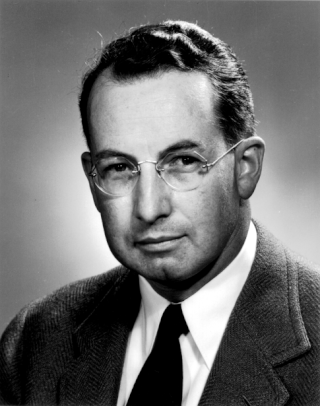
Robert Fox Bacher was an American nuclear physicist and one of the leaders of the Manhattan Project. Born in Loudonville, Ohio, Bacher obtained his undergraduate degree and doctorate from the University of Michigan, writing his 1930 doctoral thesis under the supervision of Samuel Goudsmit on the Zeeman effect of the hyperfine structure of atomic levels. After graduate work at the California Institute of Technology (Caltech) and the Massachusetts Institute of Technology (MIT), he accepted a job at Columbia University. In 1935 he accepted an offer from Hans Bethe to work with him at Cornell University in Ithaca, New York. It was there that Bacher collaborated with Bethe on his book Nuclear Physics. A: Stationary States of Nuclei (1936), the first of three books that would become known as the "Bethe Bible".

David Morris Lee is an American physicist who shared the 1996 Nobel Prize in Physics with Robert C. Richardson and Douglas Osheroff "for their discovery of superfluidity in helium-3." Lee is professor emeritus of physics at Cornell University and distinguished professor of physics at Texas A&M University.
Bernhardt Patrick John O’Mara Bockris was a South African professor of chemistry, latterly at Texas A&M University. During his long and prolific career he published some 700 papers and two dozen books. His best known work is in electrochemistry but his output also extended to environmental chemistry, photoelectrochemistry and bioelectrochemistry. In the 1990s he experimented with cold fusion and transmutation, topics on which his unorthodox views provoked controversy.
Steven Earl Jones is an American physicist. Among scientists, Jones became known for his research into muon-catalyzed fusion and geo-fusion. Jones is also known for his association with 9/11 conspiracy theories. Jones has claimed that airplane crashes and fires could not have caused the fall of the World Trade Center Towers and 7 World Trade Center, suggesting controlled demolition instead. In late 2006, some time after Brigham Young University (BYU) officials placed him on paid leave, he elected to retire in an agreement with BYU. Jones continued research and writing following his early retirement from BYU, including a paper published in Europhysics News in August 2016.
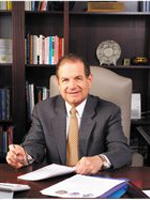
Raymond Lee Orbach is an American physicist and administrator. He served as Under Secretary for Science in the United States Department of Energy from 2006 until 2009, when he was replaced by Steven E. Koonin. Until his resignation in December 2012, Orbach was director of the Energy Institute at the University of Texas at Austin. Orbach continues to do research as a tenured professor in the Cockrell Family Dean's Chair for Engineering Excellence at the University of Texas.

Brian Paul Schmidt is a Distinguished Professor and astrophysicist at the Australian National University's Mount Stromlo Observatory and Research School of Astronomy and Astrophysics. He was the Vice-Chancellor of the Australian National University (ANU) from January 2016 to January 2024. He is known for his research in using supernovae as cosmological probes. He previously held a Federation Fellowship and a Laureate Fellowship from the Australian Research Council, and was elected a Fellow of the Royal Society (FRS) in 2012. Schmidt shared both the 2006 Shaw Prize in Astronomy and the 2011 Nobel Prize in Physics with Saul Perlmutter and Adam Riess for providing evidence that the expansion of the universe is accelerating.
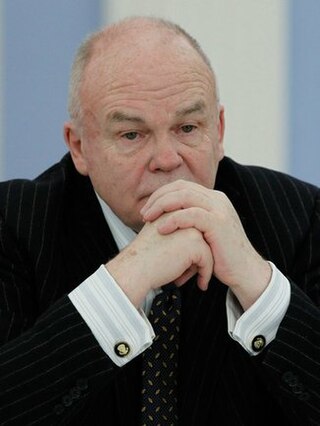
Evgeny Pavlovich Velikhov is a physicist and scientific leader in the Russian Federation. His scientific interests include plasma physics, lasers, controlled nuclear fusion, power engineering, and magnetohydrodynamics. He is the author of over 1500 scientific publications and a number of inventions and discoveries.
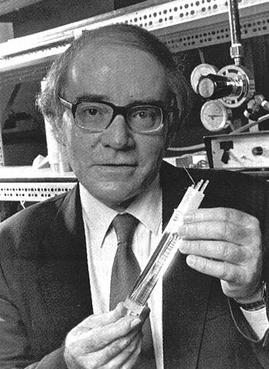
Martin Fleischmann FRS was a British chemist who worked in electrochemistry. Premature announcement of his cold fusion research with Stanley Pons, regarding excess heat in heavy water, caused a media sensation and elicited skepticism and criticism from many in the scientific community.
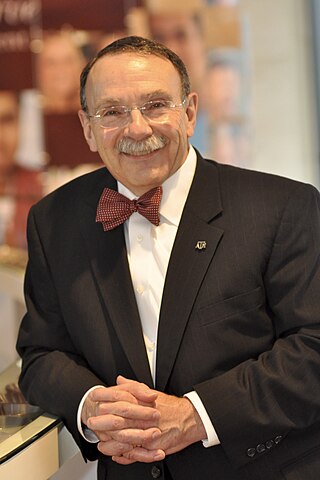
Richard Bowen Loftin, better known as R. Bowen Loftin, is an American academic and physicist who was the 22nd Chancellor of the University of Missouri in Columbia, Missouri. Prior to his appointment as chancellor, he served as the 24th president of Texas A&M University.
Alvin William Trivelpiece was an American physicist whose varied career included positions as director of the Office of Energy Research of the U.S. Department of Energy (DOE), executive officer of the American Association for the Advancement of Science (AAAS), and director of Oak Ridge National Laboratory (ORNL). He was also a professor of physics and a corporate executive. Trivelpiece's research focused on plasma physics, controlled thermonuclear research, and particle accelerators. He received several patents for accelerators and microwave devices. He died in Rancho Santa Margarita, California in August 2022 at the age of 91.
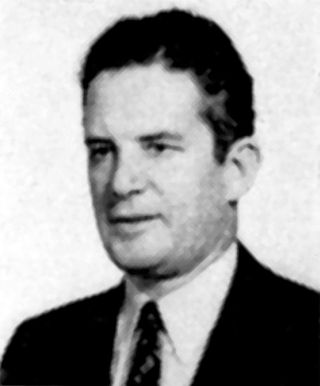
James Emory Boyd was an American physicist, mathematician, and academic administrator. He was director of the Georgia Tech Research Institute from 1957 to 1961, president of West Georgia College from 1961 to 1971, and acting president of the Georgia Institute of Technology from 1971 to 1972.
George H. Miley is a professor emeritus of physics from the University of Illinois at Urbana–Champaign. Miley is a Guggenheim Fellow and Fellow of the American Nuclear Society, the American Physical Society and the Institute of Electrical and Electronics Engineers. He was Senior NATO Fellow from 1994 to 1995, received the Edward Teller Medal in 1995, the IEEE Nuclear and Plasma Science Award in Fusion Technology in 2003 and the Radiation Science and Technology Award in 2004. He holds several patents.
Riccardo Betti is the Robert L. McCrory professor of Mechanical Engineering and Physics and Astronomy at the University of Rochester, in Rochester, NY. Since 2004, he has also acted as the Director of the Fusion Science Center at the Laboratory for Laser Energetics. He received is Ph.D. from the Department of Nuclear Engineering at the Massachusetts Institute of Technology in 1992. Prior to that he studied at the University of Rome (Italy), where he graduated with honors with a degree in Nuclear Engineering in 1987.
Lev Petrovich Pitaevskii was a Russian theoretical physicist, who made contributions to the theory of quantum mechanics, electrodynamics, low-temperature physics, plasma physics, and condensed matter physics. Together with his PhD supervisor Evgeny Lifshitz and with Vladimir Berestetskii, he was also the co-author of a few volumes of the influential Landau–Lifschitz Course of Theoretical Physics series. His academic status was professor.
William Frank Brinkman is an American physicist who served as president of the American Physical Society (2002) and was the head of the Office of Science at the United States Department of Energy (2009–2013). He was elected to the National Academy of Sciences in 1984, and won the George E. Pake Prize in 1994. He was elected as a member of the American Academy of Arts and Sciences in 1992, and became a member of the American Philosophical Society in 2002.
Seth J. Putterman is an American physicist. He is known to have an eclectic approach to research topics that broadly revolves around energy-focusing phenomena in nonlinear, continuous systems, with particular interest in turbulence, sonoluminescence, sonofusion and pyrofusion.
References
- ↑ Laura Vanderkam, Robert Duncan: From Scrubbing Smokestacks to Superfluids in Space, Scientific American, May 12, 2009
- ↑ "Vice Chancellor for Research". Research at MU. University of Missouri. May 15, 2009. Retrieved May 31, 2009.
- ↑ "Archive (1995-present)". Browse APS Fellows. American Physical Society. 2009. Retrieved 2009-07-29.
- ↑ Chris Cook, Texas Tech Names New Vice President for Research, Texas Tech Today, October 11, 2013
- ↑ Cold Fusion Is Hot Again, CBS News, Sixty Minutes, April 17, 2009
- ↑ The Missouri Energy Summit, April 22–23, 2009